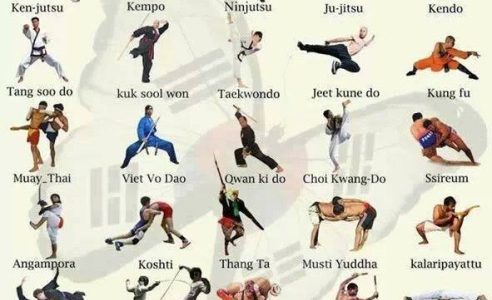The Global Journey And Advancement Of Martial Arts Throughout History
The Global Journey And Advancement Of Martial Arts Throughout History
Blog Article
Composed By-Kaufman Graham
Martial arts have a remarkable background that covers centuries and continents. You may find it interesting how old practices like Shuai Jiao and Kalaripayattu laid the groundwork for modern fight techniques. These techniques not only highlight physical skills yet likewise show the cultures that birthed them. As you explore their advancement, consider exactly how globalization has transformed these conventional types right into crossbreed styles. What influences do you assume have formed today's martial arts landscape?
Ancient Martial arts: The Foundations of Battle
As you look into the globe of old martial arts, you'll discover the abundant structures that formed combat methods throughout societies. Very early practices focused on Self-Defense and survival, typically including strikes, hurting, and weaponry.
In old China, for example, strategies like Shuai Jiao highlighted throws and joint locks, while India's Kalaripayattu showcased agility and liquid movement. Japanese samurai developed Kenjutsu, a refined swordsmanship that highlighted discipline and method.
These martial arts served not just for fight yet also as a means of personal development, instilling worths like respect and willpower. The mixing of these techniques with time prepared for the diverse martial arts you see today, each reflecting the unique viewpoints and needs of its society.
The Cultural Impact on Martial Arts Growth
While martial arts commonly reflect the practical needs of a society, they also personify the social worths and ideas of their origins. When you discover different martial arts, you'll observe how they're influenced by religious beliefs, viewpoint, and social standards.
As an example, the focus on regard and self-control in Japanese martial arts originates from Zen Buddhism and samurai society. In contrast, Brazilian Jiu-Jitsu promotes adaptability and approach, shaped by the need for performance in a diverse, modern atmosphere.
You might locate that the rituals, attires, and training methods reflect a neighborhood's history and identity. By understanding https://www.coastreportonline.com/local-events/?_evDiscoveryPath=/event%2F30969732a-shorinji-kempo-martial-arts-for-children , you strengthen your gratitude of martial arts and their role in shaping human experiences across the globe.
Modern Adaptations and the Globalization of Martial arts
Martial arts have actually changed substantially in recent years, adapting to contemporary culture and worldwide influences. You'll discover that typical types have combined with modern techniques, creating hybrid styles like MMA. These adaptations satisfy varied audiences, making martial arts easily accessible and enticing around the world.
With the rise of social media and digital platforms, you can discover tutorials and competitors from all edges of the globe, damaging geographical obstacles. This globalization has caused a shared appreciation for different self-controls, from Brazilian Jiu-Jitsu to Taekwondo.
As https://martial-arts-instructor-s22976.blogsmine.com/34843366/your-course-to-mastery-in-martial-arts-an-overview-from-newbie-to-black-belt engage with these arts, you'll understand they're not just about battle; they advertise health and fitness, discipline, and psychological wellness.
Inevitably, modern-day adjustments have actually enriched the martial arts landscape, making it a vibrant and advancing method.
Conclusion
In exploring the history and advancement of martial arts, you reveal an interesting mix of strategies, societies, and philosophies. From old self-controls like Shuai Jiao and Kalaripayattu to the modern-day flexibility seen in MMA, martial arts mirror humanity's quest for Self-Defense and personal growth. As you engage with these methods, you not only gain skills but additionally a much deeper admiration for the varied traditions that shape our globe today. So, proceed your trip and embrace the art of combat!
